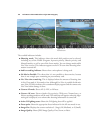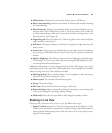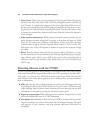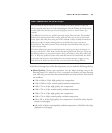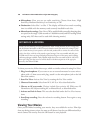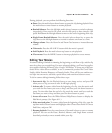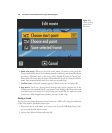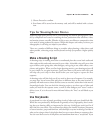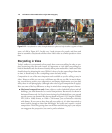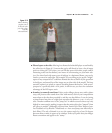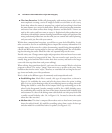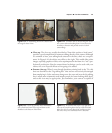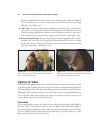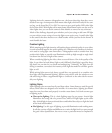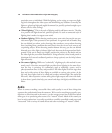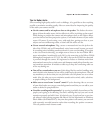
David Busch’s Nikon D7000 Guide to Digital SLR Photography170
Figure 6.12 A storyboard is a series of simple sketches or photos to help visualize a segment of video.
want, as I did in Figure 6.12. In this case, I took pictures of a parade, and then used
them to assemble a storyboard to follow when I shot video at a similar parade on a later
date.
Storytelling in Video
Today’s audience is accustomed to fast-paced, short scene storytelling. In order to pro-
duce interesting video for such viewers, it’s important to view video storytelling as a
kind of shorthand code for the more leisurely efforts print media offers. Audio and video
should always be advancing the story. While it’s okay to let the camera linger from time
to time, it should only be for a compelling reason and only briefly.
Composition is one of the most important tools available to you for telling a story in
video. However, while you can crop a still frame any old way you like, in movie shoot-
ing, several factors restrict your composition, and impose requirements you just don’t
always have in still photography (although other rules of good composition do apply).
Here are some of the key differences to keep in mind when composing movie frames:
■ Horizontal compositions only. Some subjects, such as basketball players and tall
buildings, just lend themselves to vertical compositions. But movies are shown in
horizontal format only. So if you’re interviewing a local basketball star, you can end
up with a worst-case situation like the one shown in Figure 6.13. Using the D7000’s
FH (1920 × 1080) format, or 1280 × 720 formats, you are limited to relatively
wide frames. If you want to show how tall your subject is, it’s often impractical to
move back far enough to show him full-length. You really can’t capture a vertical
composition. Tricks like getting down on the floor and shooting up at your subject
can exaggerate the perspective, but aren’t a perfect solution.



